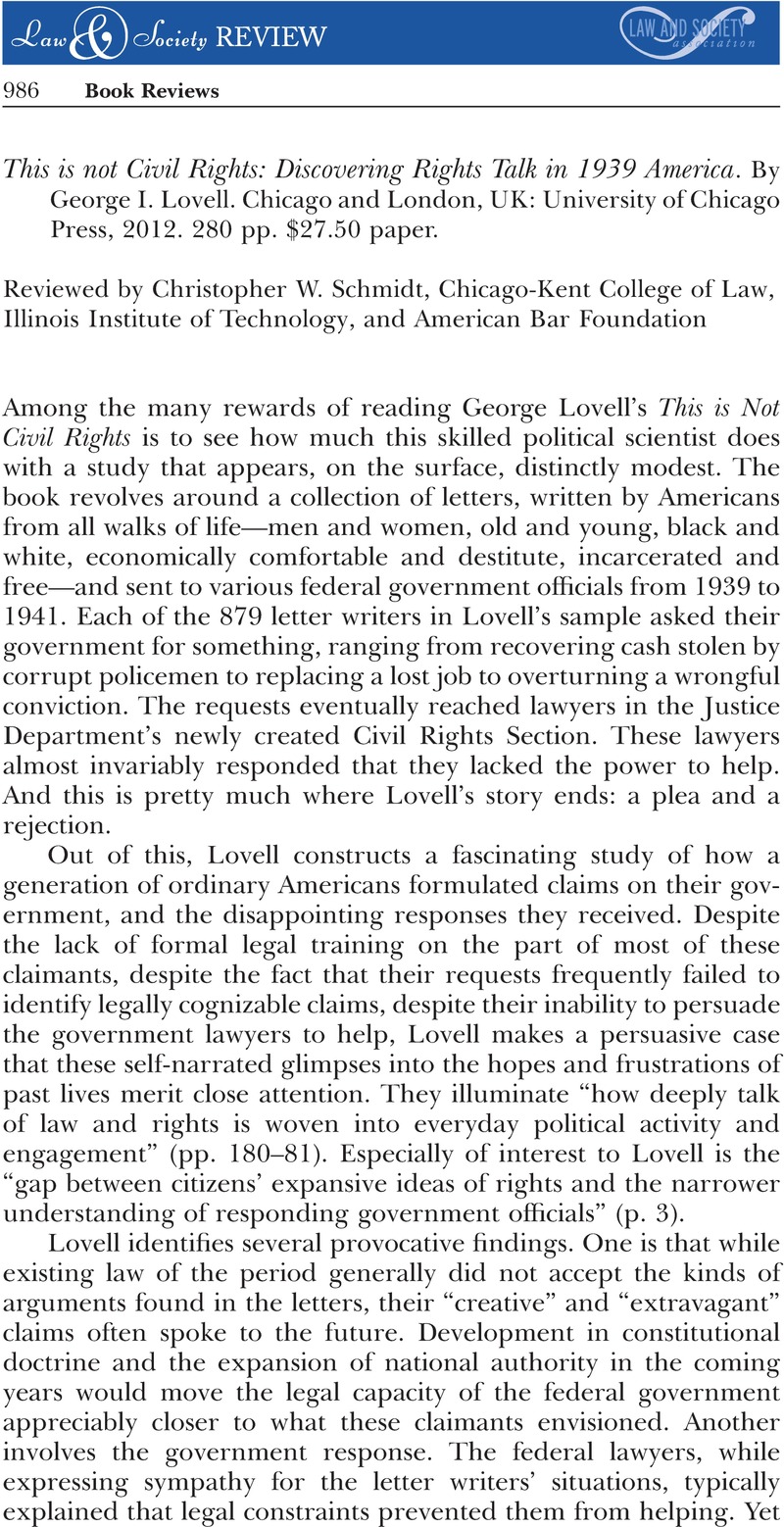No CrossRef data available.
Article contents
This is not Civil Rights: Discovering Rights Talk in 1939 America. By George I. Lovell. Chicago and London, UK: University of Chicago Press, 2012. 280 pp. $27.50 paper.
Review products
This is not Civil Rights: Discovering Rights Talk in 1939 America. By George I. Lovell. Chicago and London, UK: University of Chicago Press, 2012. 280 pp. $27.50 paper.
Published online by Cambridge University Press: 01 January 2024
Abstract
An abstract is not available for this content so a preview has been provided. Please use the Get access link above for information on how to access this content.

- Type
- Book Review
- Information
- Copyright
- © 2013 Law and Society Association.


